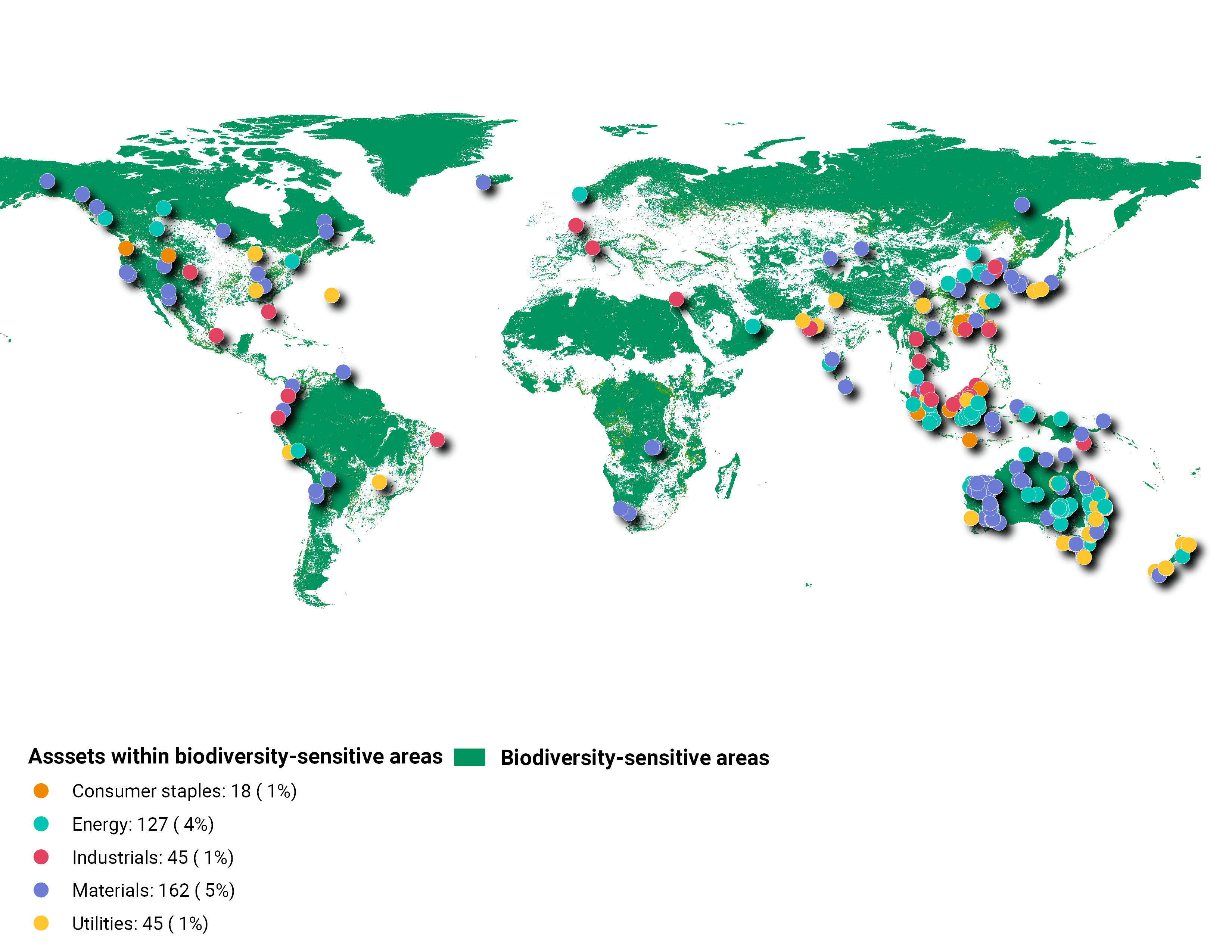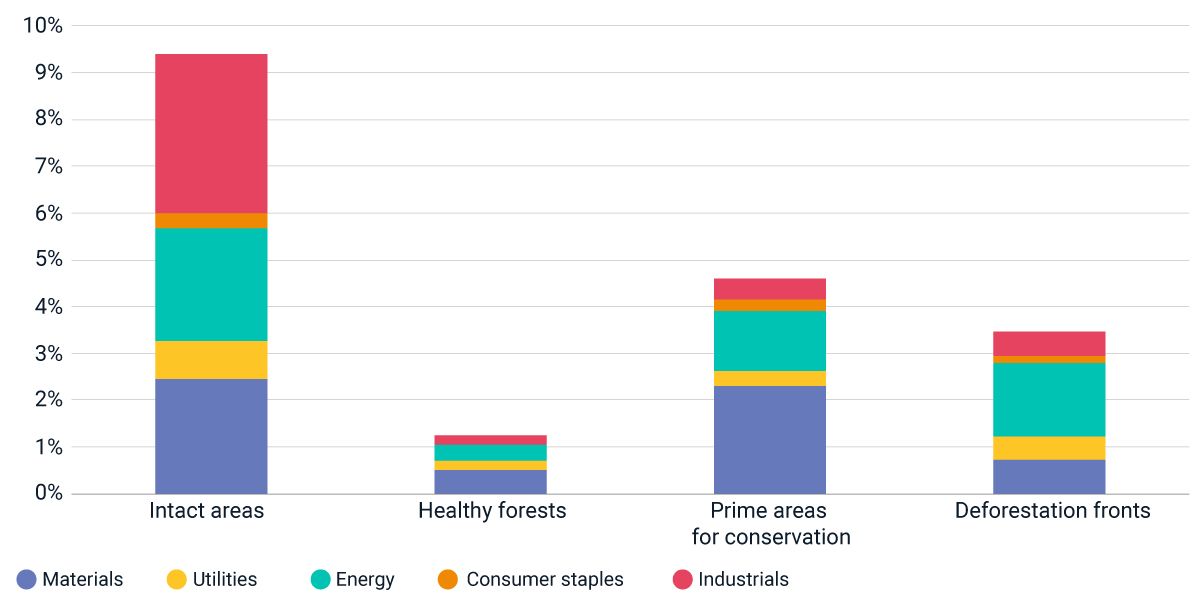Using Geospatial Analysis to Assess Biodiversity Risks in Asia-Pacific
We identified 127 companies in the MSCI AC Asia Investable Market Index1 that operate in an industry assessed on biodiversity-related key issues. This means these companies may be more likely to contribute directly to biodiversity loss and be more susceptible to biodiversity-loss risks.
We used the MSCI Biodiversity-Sensitive Areas Screening Metrics to identify which of the 3,500 physical assets in our database operated by these companies were within 1.5 kilometers of biodiversity-sensitive areas, denoted as healthy forests, intact biodiversity areas, prime areas for conservation or deforestation fronts. The sectors presented in the exhibits below are based on the Global Industry Classification Standard (GICS®).2
Investors focused on biodiversity may wish to consider such sector-level risks when assessing their portfolios.
Sectors with operations in biodiversity-sensitive areas

Source: GLOBIO, MSCI ESG Research
Assets in biodiversity-sensitive areas by sector

Data as of April 2023. Source: GLOBIO, MSCI ESG Research
Subscribe todayto have insights delivered to your inbox.
Which Sectors Are Most Affected by Climate Risks?
Managing climate-change risks can be crucial to protecting portfolios while reaching sustainability goals. We looked at the impact of physical risks at the sector level for the MSCI AC Asia Pacific Investable Market Index to identify where the risks lay.
Most Prevalent Climate Hazards Found in Asia-Pacific
Hazard data is a key component of physical-risk modeling. We mapped the physical assets operated by constituents of the MSCI AC Asia Investable Market Index to the most prevalent climate hazards in the region to see where the risks lay.
How Extreme Temperatures May Affect Chinese Companies
In the face of rising temperatures in China, comprehensive adaptation and response plans are crucial to mitigate the physical risks of extreme heat, especially for more exposed regions.
1 The MSCI AC Asia Investable Market Index (IMI) captures large-, mid- and small-cap companies across three developed-market and eight emerging-market countries in Asia.', 'The Global Industry Classification Standard is an industry taxonomy developed by MSCI and S&P Global Market Intelligence. The constituents (n=4,170), belonging to the information-technology (n=569), financials (n=438), consumer-discretionary (n=544), industrials (n=713), materials (n=499), communication-services (n=193), health-care (n=367), consumer-staples (n=319), real estate (n=318), energy (n=91) and utilities (n=117) sectors of the MSCI AC Asia Pacific IMI, are as of April 2023.
The content of this page is for informational purposes only and is intended for institutional professionals with the analytical resources and tools necessary to interpret any performance information. Nothing herein is intended to recommend any product, tool or service. For all references to laws, rules or regulations, please note that the information is provided “as is” and does not constitute legal advice or any binding interpretation. Any approach to comply with regulatory or policy initiatives should be discussed with your own legal counsel and/or the relevant competent authority, as needed.

